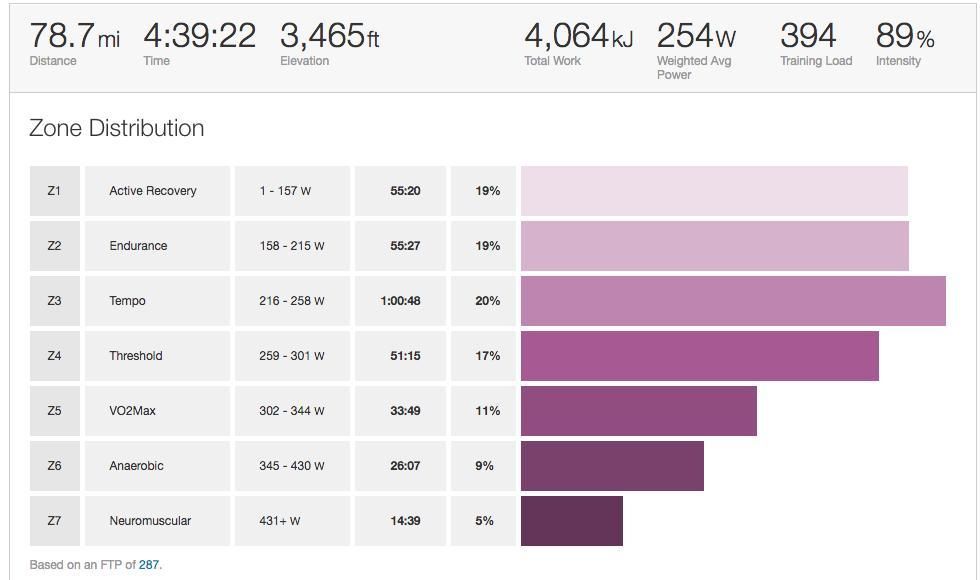All I know at this point is that the addition of the Stages has given me a whole bunch more numbers that I really don't know what to do with. Actual recorded power numbers are above pre-meter Strava estimates on my handful of recorded rides, but I've simply lacked the gusto to attempt an FTP test... so I have literally no idea what to do with the numbers, or even what numbers to shoot for. The instantly available power data has, if anything, made Z2 riding (which was easy on HRM alone) really difficult, because (in my limited use so far) there is absolutely no relation between HR and power output. I've averaged 244w (unweighted) at an HR average of 128bpm (which for me is barely out of Z1) and also averaged 242w (unweighted) at an average of 147bpm. So I have yet to determine the relation. The ride I brought in the screenshot below had a lot of wind swirling, so I think that's some of the higher HR/lower speed relative to others, but I'm more interested in figuring out the power numbers.
I also don't know what to focus on-- weighted numbers or unweighted numbers. Strava also apparently estimated my FTP for me at 287w (I have no idea if that's applicable to anything, but regardless. This is from yesterday on the 4th. Some of these numbers I get, some mean nothing to me. Training load? Intensity? Wuzzat?
